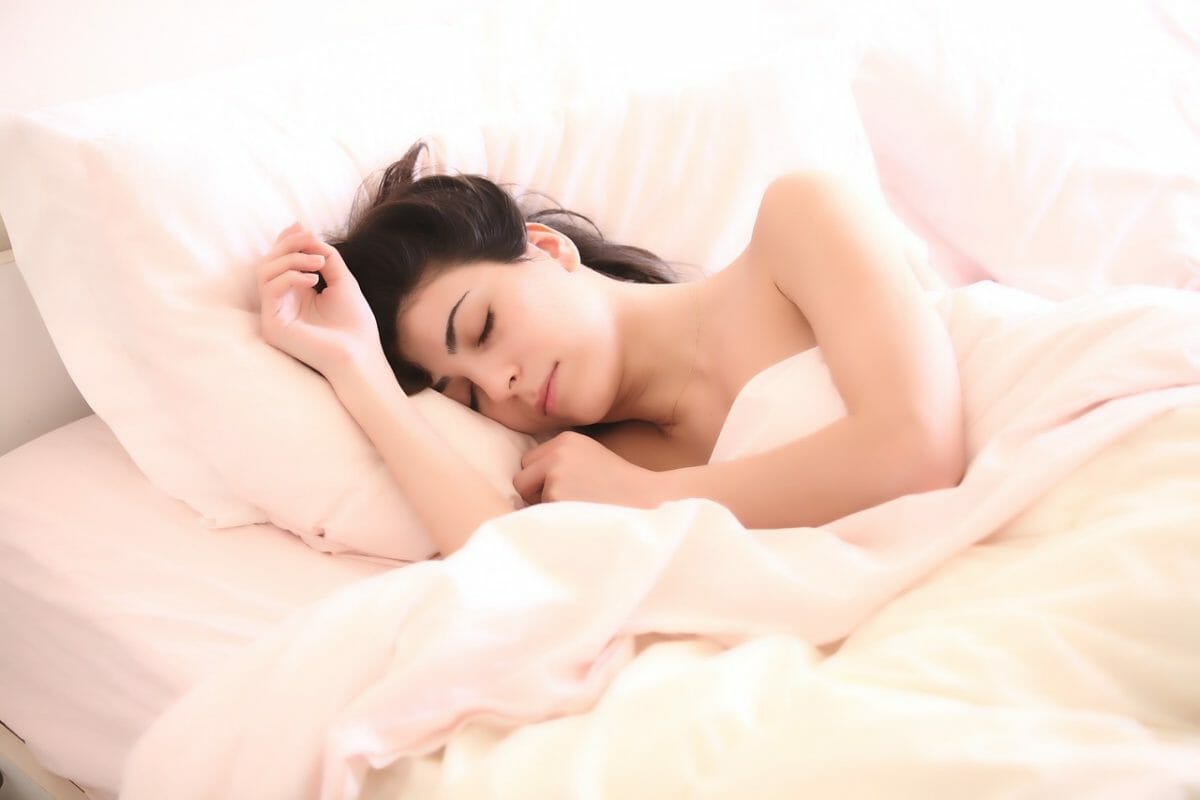Ever wake up with wrinkles and lines on your face from your pillowcase? You’re not alone! The material you sleep on plays a huge role in preventing unwanted creases while you sleep. The good news is choosing the right pillowcase can help you wake up wrinkle-free! In this article, I’ll walk you through exactly what to look for in a skin-friendly pillowcase and share some pro tips for keeping your complexion looking young. You’ll learn why your pillowcase material matters and how making some simple swaps can help reduce wrinkles overnight. Ready to wake up with fresher, smoother skin? Read on to learn how to prevent wrinkles with the right pillowcase!
The Fabric Factor: Why Material Matters
The type of fabric your pillowcase is made from has a measurable impact on your skin’s health and appearance over time. As you press your face into a pillowcase for hours each night, subtle skin irritation, inflammation, and dehydration from the fabric can accumulate.
Studies have found that certain materials like flannel and standard cotton disrupt your skin’s natural moisture barrier, leading to transepidermal water loss. This is due to the inherent friction and absorbent qualities of these fabrics. Over time, facial skin can become dry, sensitive, and prone to wrinkles.
On the other hand, slippery smooth fabrics like silk and satin allow your skin to glide friction-free across the surface, reducing sleep creases and fine lines. The smoothness also prevents the fabric from absorbing your skin’s natural moisturizing oils and hydration.
Seeking out skin-friendly, wrinkle-resistant fabrics can make a real difference in how you look and feel when you wake up in the morning. Put simply, your pillowcase material matters. Investing in silk, satin, or high-quality cotton with extra-long fibers will give your complexion a head start on refreshed, glowing, youthful skin. For those interested in luxury bedding, pillows made with skin-nourishing fabrics like luxury pillows for your bed are a great way to treat yourself.
The Silk Solution: A Luxurious Way to Age Gracefully
Dermatologists widely agree that sleeping on silk is ideal for reducing wrinkles. Silk pillowcases retain moisture and allow your skin to glide smoothly along the surface rather than “gripping” it. This reduces friction, irritation, and the dreaded sleep creases.
Research shows silk helps skin hold more moisture compared to cotton, leading to better hydration and fewer fine lines over time. Silk is also naturally hypoallergenic, preventing breakouts.
“Silk is the ultimate luxurious choice for preventing wrinkles,” says Dr. Sasha Isaev of Radiance Wellness & Aesthetics. “It allows your skin to rest and recover overnight.”
While regular silk will do, opt for 100% Mulberry silk for the highest quality. Try Slip, LilySilk, or THXSilk for a wrinkle-fighting upgrade.
While silk is ideal, what about more common cotton pillowcases?
The Cotton Conundrum: When It’s Not the Best
Although cotton is soft, the inherent friction can compress delicate facial skin for hours. Cotton also harbors more sweat, bacteria, and oils than slippery silk. A study showed cotton pillowcases contain over 700% more bacteria than silk after just one week of use!
The result? More breakouts, irritation, and eventually, wrinkles. Cotton may absorb moisture from skincare products instead of letting them work their magic overnight.
If you love the softness of cotton, choose high-quality Pima or Egyptian cotton, which has longer fibers and smoother surfaces. While not as ideal as silk, these are better options.
The Position Predicament: How You Sleep Matters
Your pillowcase material is crucial, but so is your sleep position. Sleeping on your side places pressure on one side of your face for hours, resulting in sleep lines. Use a silk pillowcase to allow your skin to glide freely rather than “sticking” to the surface to minimize creases.
Back sleepers avoid facial compression but may experience neck wrinkles from hyperextension. Try using a satin pillowcase or a supportive cervical pillow to maintain neck alignment.
If you sleep prone, use a specialized pillow with a cut-out to prevent neck overextension and facial squishing.
Aim to switch positions throughout the night to reduce pressure on any one area.
The Cleaning Cycle: Wash Regularly for Fresh, Healthy Skin
Keeping your pillowcases clean is really important to stop oils, dirt, makeup, and dead skin from building up and clogging your pores. But how often should you wash them?
Dermatologists usually say to wash your pillowcases once a week. If your skin is oily or you often get clogged pores and breakouts, it’s even better to wash them twice a week. If you don’t wash them often enough, bacteria, oils, and things that can make you allergic build up. This can lead to blocked pores, redness, swelling, and even wrinkles on your face over time.
When you wash them, use a gentle, unscented liquid soap. Don’t use fabric softeners because they can make sensitive facial skin irritated. Some dermatologists suggest using baby shampoo that doesn’t have a strong pH, to wash your pillowcases. It can get rid of oils and bacteria without hurting your skin.
For fancy materials like silk, you should use special silk soaps or shampoos. These keep the material looking nice even after lots of washes. And don’t forget to dry them properly. If you have delicate fabrics like silk, let them dry in the air or use the gentle drying setting in the dryer. Too much heat can damage them. If you take good care of them, a high-quality silk pillowcase can stay nice and smooth for over 5 years!
It’s as important to clean your pillowcases regularly as it is to choose the right fabric. When your bedding is clean, your skin stays fresh and healthy, and you’ll wake up looking great every day.
Specialized Solutions: Options for Different Skin Types
Do you suffer from allergies or skin conditions like eczema? Trying a specialized pillowcase could make all the difference.
- Linen: Naturally hypoallergenic and breathable for sensitive skin.
- Lyocell/Tencel: Made from wood pulp, Tencel feels super soft and smooth like silk.
- Bamboo: Helps regulate temperature and absorb moisture. Best for acne-prone skin.
- Copper oxide: Has antimicrobial properties to fight bacteria. Ideal for oily or acne-prone skin.
Look for certified organic materials free of irritating dyes and chemicals. It’s worth investing in quality bedding tailored to your skin’s needs.
The Final Verdict: Your Best Choice for Wrinkle-Free Skin
While no pillowcase prevents wrinkles alone, silk is widely considered the gold standard. Its unrivaled smoothness minimizes facial friction and allows skin to retain moisture. Proper care will help silk pillowcases retain their wrinkle-fighting powers for years.
Cotton may not make the cut, but improved types like long-staple Egyptian cotton are acceptable. Make sure to wash your pillowcases frequently to prevent the buildup of dirt, oil, and bacteria.
Factor in your sleep position as well. Combining the right pillowcase material with proper sleep posture will give you a head start on waking up line-free!
Invest in quality, specialized bedding to address any skin conditions for optimal results. With a comprehensive approach, you can lay the foundation for a glowing, youthful complexion.
Frequently Asked Questions
- Is silk really better than cotton for preventing wrinkles?
Multiple studies have demonstrated silk’s clear benefits over cotton. The incredibly smooth surface creates less friction and allows the skin to retain more moisture. Dermatologists overwhelmingly recommend silk over cotton for reducing fine lines and wrinkles.
- How often should I wash my pillowcase to maintain skin health?
Wash your pillowcase at least once a week, twice weekly for oily skin. Frequent washing prevents the buildup of dirt, oils, and bacteria that damage skin over time. Use a mild, fragrance-free detergent to prevent irritation.
- Are there specialized pillowcases for people with sensitive skin?
Yes, materials like linen, lyocell, bamboo, and copper oxide have properties tailored for sensitive, acne-prone, or allergy-prone skin. Opt for certified organic materials free of dyes and chemicals. Your dermatologist can help recommend the best choice.
In Conclusion
Choosing the right pillowcase material is crucial for preventing wrinkles as you sleep. Silk reigns supreme for its unparalleled smoothness that allows the skin to retain moisture, prevents friction, and reduces irritation. Wash pillowcases at least weekly and choose bedding suited for your skin type. Combine with proper sleep posture for optimal anti-wrinkle results!
Take Control of Your Skin Health
Invest in quality silk bedding and customize your sleep setup for your skin type. With small upgrades to your sleep routine, you can wake up radiant every morning. Browse our top-rated silk collections to start your journey towards wrinkle-free skin!






